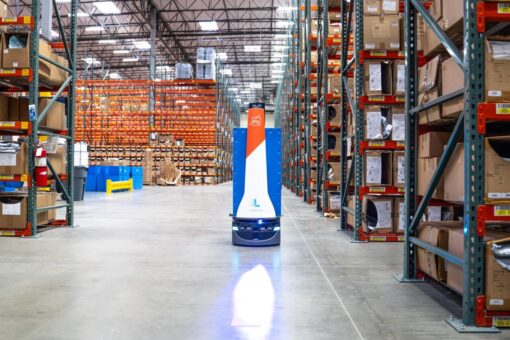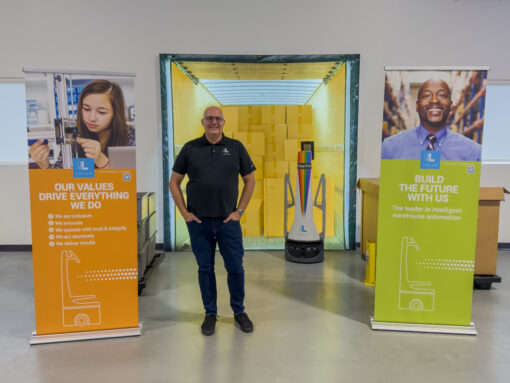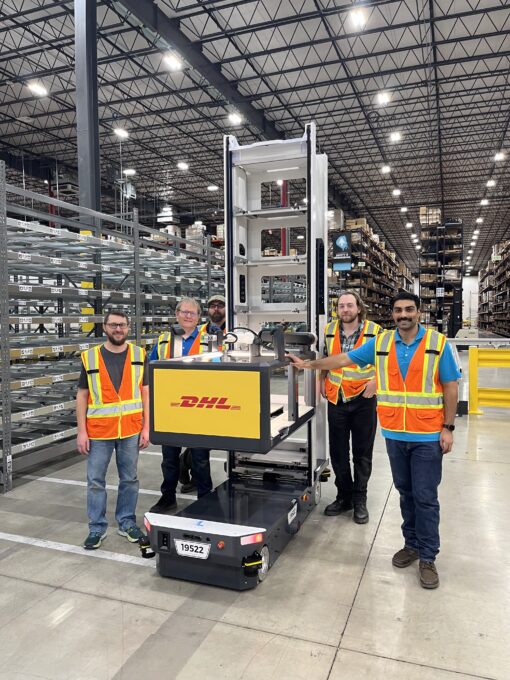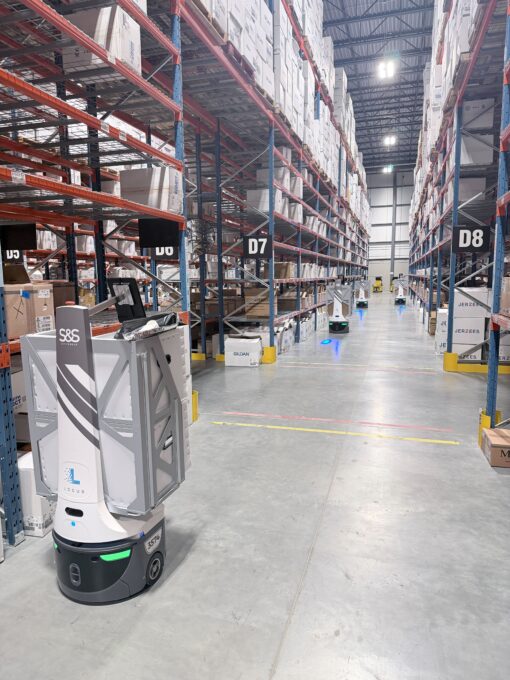WP: How to achieve 400 UPH with Locus Fast Pick
WP: How to achieve 400 UPH with Locus Fast Pick Download Now!
Humanoids or Purpose-Built Warehouse Automation? Where the Market is Headed and Why
Rick Faulk, Chief Executive Officer

At Locus, we believe that purpose-built, physical AI robotics will dominate the logistics and warehouse automation market for years to come, outpacing general-purpose humanoids.
However, there has been no shortage of headlines lately about the rise of humanoid robots, sparked in part by Morgan Stanley’s prediction of a $5 trillion humanoid market by 2050. It’s a bold forecast and one that has captured the attention of both investors and the public alike.
But when it comes to warehouse automation, the reality on the ground tells a different story.
Robotics professionals like Aaron Prather, the Director of the Robotics & Autonomous Systems Program at ASTM International, are increasingly skeptical that humanoids will ever meet the performance, reliability, and scalability needs of high-throughput fulfillment environments. As one commenter put it on Prather’s post, ‘Cool videos don’t scale.’ Instead, warehouses need systems that can deliver real, measurable ROI now.
The Allure of the Humanoid and Its Limits
Humanoids continue to attract funding and attention because they embody the dream of general-purpose robotics: machines that can operate in human environments and handle a wide range of tasks without customization. For some investors, this vision is tempting.
However, in warehousing, success depends on performance, flexibility, safety, return on investment, and scalability. Despite their media-friendly demos, humanoids still face significant obstacles to commercial deployment in fulfillment environments.
- Speed and Uptime: Warehouses operate on tight service-level agreements and relentless throughput, and humanoids can’t keep pace with the precision and consistency needed on the floor.
- Lack of Task Specialization: Warehouse automation focuses on executing fast, repeatable, high-volume tasks such as picking, transporting, and replenishing, and general-purpose humanoids are not designed for that level of efficiency.
- High Cost, Low ROI: The economics don’t add up as humanoids remain costly to build, train, and maintain without delivering proven value at scale. Over time, these economic dynamics may improve, but they will still face challenges.
- Integration Challenges: Humanoids don’t naturally plug into WMS systems, zone-based workflows, or high-density storage environments, and making them work requires heavy customization.
- Safety and Compliance: Full autonomy in shared workspaces raises unresolved safety and liability concerns, especially at scale.
- Unproven at Scale: There are no real-world, scaled deployments of humanoids in warehouse settings today. That matters.
Warehouse operators are seeking proven performance in automation solutions rather than just potential.
Purpose-Built AI Automation for True Warehouse Value
While humanoids continue to develop in labs and headlines, purpose-built warehouse automation is already a viable solution, improving logistics operations worldwide.
Take Locus Origin, Vector, and the soon-to-launch Array. These are great examples of “physical AI” purpose-built for warehouse environments and engineered to handle high-volume picking, putaway, and transport with precision. They don't need to look like humans because they're designed to augment and enhance human capabilities.
Here’s how purpose-built warehouse automation is already delivering real, tangible impact:
- Faster Time to Value: Purpose-built systems are ready for deployment now, not years from now. The Locus solution is currently operating at scale across hundreds of sites, with over 5 million picks and counting.
- Exceptional ROI: These systems drive faster pick rates, higher uptime, and lower total cost of ownership. They’re built to do one thing, and they do it exceptionally well.
- Tight Integration: Purpose-built robots are designed to work with standard WMS platforms and slot directly into established workflows without the need for a massive infrastructure overhaul.
- Space Optimization and Zero-Touch: Future-ready solutions, such as Array, support higher storage density and zero-touch fulfillment capabilities, which are not inherent to humanoid form factors.
- Operational Simplicity: These solutions avoid the complexity of humanoid learning curves by being streamlined, dependable, and easy to scale.
Alleviating Labor Shortages with Automation
Persistent labor shortages have added new urgency to the decision to automate. Warehouses are under pressure to maintain productivity even as it becomes harder to hire and retain workers for physically demanding, repetitive tasks.
The smart approach to these challenges is to invest in warehouse automation that alleviates pressure on human labor while expanding overall capacity. Purpose-built automation enables human workers to assume more value-added roles, such as inventory management and quality control. At the same time, the repetitive, lower-efficiency tasks are handled by machines designed for precisely that purpose.
The key is to focus on scalable, purpose-built solutions that can integrate seamlessly into existing workflows and grow in tandem with your business. Rather than chasing hype, look for technologies that have proven ROI, strong uptime, and the ability to address multiple use cases.
At Locus, we're actively experimenting with collaborative solutions from innovative companies like Reflex Robotics. These pilot initiatives allow us to evaluate their practical impact and understand how emerging technologies can further improve efficiency and productivity over time.
Warehouse Automation for the Next Decade
The next generation of warehouse automation will be pragmatic, flexible, and driven by data.
The fundamental transformation will come from purpose-built physical AI solutions like Array, which can eliminate over 90% of human labor, enhance throughput, and operate continuously without human intervention.
As warehouses evolve, success will hinge not on chasing the latest headline but on choosing automation that performs today, tomorrow, and ten years from now.
About the Author
Rick leads the executive team with over 30 years of experience in executive management, sales, and marketing for some of the world’s most successful technology companies, such as Cisco, Intronis, j2 Global, WebEx, Intranets.com, Barracuda Networks, Lotus Development, Mzinga, and PictureTel. Rick leads the executive team and is responsible for the overall strategy and execution at Locus Robotics. Rick currently sits on various boards and is an advisor to multiple companies, including Retrocausal, Arccos, Cybernetix Ventures, and Leading Edge Ventures. Past board positions include Yodle, Virtual Computer, Bidding for Good, Skill Survey, Influitive, Ntirety, Blue Raven, and Centive.




